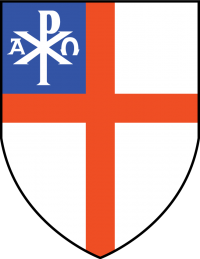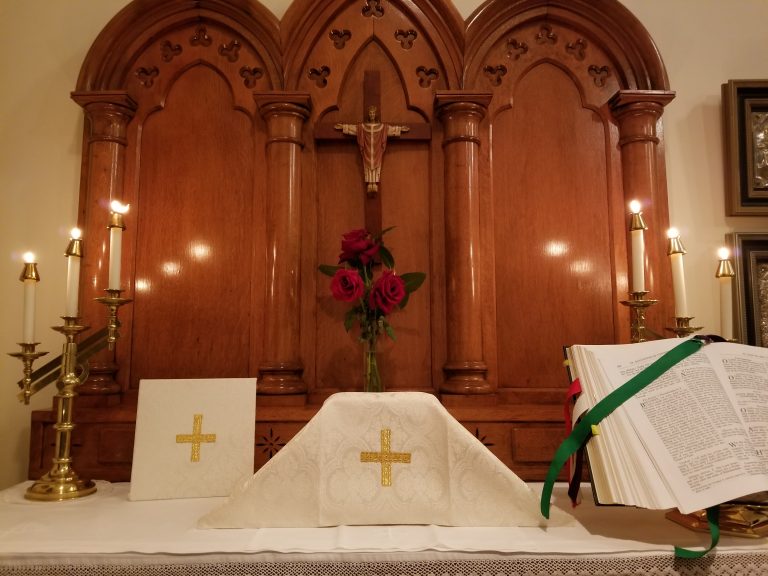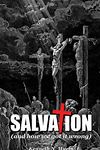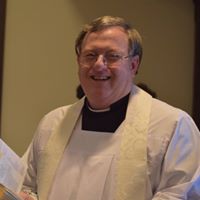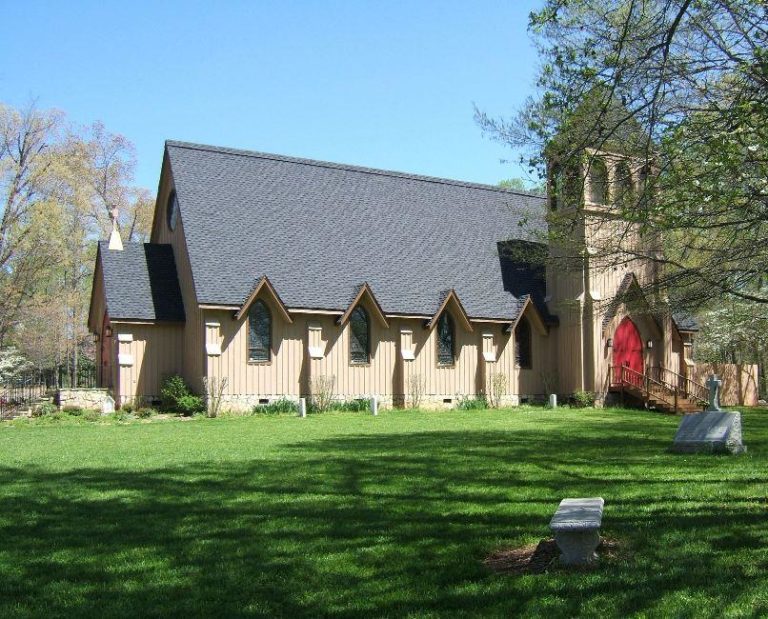Confirmation Adult Manual 2019 volume 5 of 10
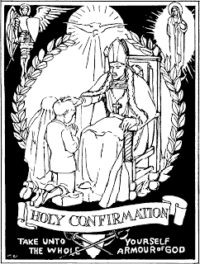
CHAPTER 5
Overall discussion of Sacraments and early church:
Holy Order:
The Church has recognized three distinct orders of ordained ministry since the time of the apostles. Bishops, priests, and deacons each have distinct leadership functions. Through a process of mutual discernment, the Church recognizes those who are called by God to ordained ministry and admits them to Holy Orders through prayer and laying on of hands by a bishop or bishops duly qualified to ordain and consecrate. The manner of ordination in the Anglican Church, Anglican Province of America, is consistent with the customs of the early Church in order to affirm the continuity of these sacred orders in historical time.
THE ORDINATION OF A BISHOP
Bishops are ordained whenever possible on Sundays, feasts of Our Lord, or of the apostles or evangelists. The Presiding Bishop or designee presides and is chief consecrator, accompanied by at least two other bishops. Consecration by at least three bishops both symbolizes and assures that new bishops are part of a community of ordained overseers and chief pastors stretching back in history to the time of the apostles and linking around the globe with other bishops in the one, holy, catholic Church of today.
THE ORDINATION OF A PRIEST
A priest is ordained by a duly qualified bishop in the presence of at least two other priests. Through prayer and the laying on of hands by the bishop and other priests, God confers the grace and power to equip the new priest for his duties.
THE ORDINATION OF A DEACON
Candidates for priesthood, or those desiring only the role of Deacon as a “Perpetual Deacon” are first ordained as deacons, an order of ministry first mentioned in the Acts of the Apostles as those chosen to serve the people of God and assure just treatment of the helpless while the apostles preached and taught (Acts chapter 6 verses1-6). They were ordained by laying on of hands. Deacons who will later be ordained as priests are called “transitional deacons.” The diaconate is a special ministry of servant hood.
SUMMARIZING:
Bishop: A Bishop serves the ministry of OVERSIGHT, coordinating and propagating the work of the Church.
A Priest: serves the ministry, leading a community in its varied circumstances to do the work of the Church, feeding and forming the community as it does so.
A Deacon: serves the ministry of SERVICE, engaging the Church and its local communities in meeting the needs of those both inside and outside its fellowship.
HOLY MATRIMONY
The sacrament of matrimony is actually performed by the two persons being married, not by the celebrant. The celebrant pronounces the blessing of the marriage. It is a “solemn and public covenant between a man and a woman in the presence of God.”
Assurance must be made that both parties have the right to contract a marriage according to the laws of the State; that both parties understand that Holy Matrimony is a physical and spiritual union of a man and a woman, entered into within the community of faith, by mutual consent of heart, mind, and will, and with intent that it be lifelong; that both parties freely and knowingly consent to such marriage, without fraud, coercion, mistake as to identity of a partner, or mental reservation; both parties have received Holy Baptism; that both parties have been instructed as to the nature, meaning, and purpose of Holy Matrimony by the Member of the Clergy and received such instruction. Clergy typically prepare a couple for marriage during several joint sessions during the weeks or months immediately preceding the wedding.
The liturgy of Holy Matrimony takes place in the context of the Liturgy of the Word and may be followed by Holy Communion. After the exhortation, the man and woman each give their consent to the marriage and the witnesses, including the congregation, promise to uphold the couple in their marriage. The actual marriage, or exchange of vows, comes after the scripture readings. The couple join hands as they exchange their vows to love, sustain, and support one another in success and in adversity until death. These words and the joining of hands are the outward sign of the grace given in marriage, the grace to live up to those vows. Although rings are commonly blessed and exchanged, they are not essential and are not the sacramental sign.
We pray that the married couple may be a sign of Christ’s love for the world, in other words, that their relationship itself be a sacrament, a sign of unity, forgiveness, and joy, and that their affection would overflow into their community. The marriage concludes with a priestly blessing, asking God’s grace that they may live their marriage covenant faithfully.
RECONCILIATION OF A PENITENT
In the Anglican Church, private confession is available but not required. The offices of Morning and Evening Prayer and the liturgies of Holy Eucharist contain general confessions and absolution deemed efficacious and sufficient whenever we seek forgiveness from God with truly penitent hearts.
There are two forms of service for private confession, however, and they may be used whenever a penitent wishes. Private confession is frequently sought and offered during a time of crisis or great change, during a serious illness, during Lent, or when the penitent is greatly troubled and in need of pastoral care. The Rite of Reconciliation is by no means limited to these times, however.
The confessor may spend some time in pastoral conversation with the penitent in preparation for the Rite. A preparation exercise for preparing for Confession may be helpful. After the penitent confesses all serious sin, the confessor may offer “counsel, direction, and comfort” as well as assigning some prayer or action to be performed as a sign of contrition and thanksgiving. Only a bishop or a priest may then pronounce absolution in the service. The contents of the confession are a matter of absolute secrecy for the confessor (“the seal of the confessional”).
Each Christian has a ministry of reconciliation to the world, exercised through our care for others, our willingness to give and receive forgiveness to and from our neighbors, and our work for peace and justice. We live sacramentally when we embody Christ’s ministry of reconciliation in our daily relationships.
UNCTION
The anointing of the sick with prayer for healing and laying on of hands is recommended in the Letter of James and has been practiced by the Church since earliest times. It became associated with the time of death, however, and was at one time called “Extreme Unction.” Now it is recognized that prayers and anointing for healing of body, mind, and spirit are appropriate at any time.
We think of doctors, nurses, counselors, and other kinds of caregivers as having healing ministries; and indeed, some Christians have specific and powerful healing gifts from the Holy Spirit. All Christians, however, are called to a sacramental life of healing, living in our broken world as a sign of Christ’s healing ministry by visiting and caring for the sick, advocating for the disenfranchised, honoring our own physical, mental, and spiritual well-being, and conducting our lives with reverence for the gift of creation.
“There is none other Name under heaven given to man, in whom, and through whom, thou mayest receive health and salvation, but on the Name of our Lord Jesus Christ. Amen” Book of Common Prayer page 314.
SUMMARIZING:
What is Sacramental living?
Each of the seven sacraments addresses the spiritual needs of Christians as individuals, but they also have implications for the way we bring the Kingdom of God into reality in the world. By fully living out these sacraments—keeping our baptismal covenant, embodying Christ, being witnesses, healers, and reconcilers— we ourselves become sacraments. As sacramental Christians we are outward, visible signs of God’s grace, grace that is ever-present and abundantly available whenever we make ourselves open to it in faith.
Scripture and the Anglican Faith:
Apostolic Succession, the Creeds, and the development of the Canon of Scripture help to combat heresies. The spokesmen of the Church and thus early church doctrine were the Apostles and those they appointed, Acts of the Apostle chapter 6, and the emphasis placed upon them can be seen as early as late the first century by early Church fathers such as Clement of Rome. The emphasis placed upon the early Bishops allowed them to battle heresy within the church. Their authority came from the Apostles thus there words and doctrine had much weight over those of the different heresy’s and the source of their origin and development.
The Creeds were developed and instituted to battle the heresies of their time (Nicene creed – Arianism) and to lay out the basics of the Christian Faith. They were formed by the Church speaking as one voice (although there were disagreements within the delegation) and allowed the Christian faith to be defined by the words of the creeds.
By Canonizing the Scripture, the Christian Faith was able to state the only books from which its doctrines were to be derived. This help the Church defend against the different writings that the heretical church would use to back their doctrine. In a way it helped narrow the resources needed to combat false teachings and false practices which tried to gain footing in the early church.
The Bible’s Place in Anglican Theology:
A fundamental question is where Holy Scripture sits in our doctrine. This is answered by saying that Scripture is the first and foundational of three factors that make up our theology; the other two are Christian tradition and reason.
For Anglicans, the Bible is authoritative for Christian belief because the Church of today is “in continuity with Israel and the early Church. This community’s classic and normative experience of Jesus and God in the history of Israel (as revealed in the Bible) still gives our faith its basic shape today.”
Christian tradition is the record of the church’s efforts to understand and convey the faith of the Bible. The Bible is the Church’s “account of Jesus and of Israel’s experience of God. It is also the standard against which extensions must be tested. Reason is the construction of reality in which our biblical faith can be understood. Scripture, Tradition, and Reason are required to produce a theology adequate to meet Anglican standards.
Having identified the Bible as the first essential component of our Anglican theology, we will expand upon its authority from five perspectives:
1. Canon of Scripture as the Word of God;
2. as inspired by God;
3. as sufficient for leading us to salvation and nurturing our awareness of God;
4. as the primary source document of our faith; and as canon within the Anglican Church.
It is through these perspectives that we should see that the Bible truly serves as the anchor and guiding light of our faith. We will also take a look at the interpretation of scripture.
THE AUTHORITY OF SCRIPTURE IN ANGLICAN THEOLOGY:
Canon of Scripture as the Word of God
Canon of Holy Scripture is defined as the collection of inspired writings, made by the tradition and authority of the Church, which contain the rule of Divine Faith. Canonical; therefore, means accepted or recognized by the Church. The traditional principle that only the Church has the right to declare a Book canonical is recognized by the Roman Catholic Church, the Orthodox Churches, and the Anglican Communion.
The Jews seem to be the first people to have had authoritative scriptures, and the council of Jamnia in A.D 70 gave the Jewish Canon its final form (other parts of Old Testament writings were established much earlier.) Early Christian writers, such as Justin Martyr, were referring to the New Testament as contrasted with the Old Testament and insisted that both be treated with equal authority. It was not until 367 when Athanasius circulated his thirty-ninth Festal Letter which identifies the twenty seven books of the New Testament, as we now know it, as being canonical.
Finally we find the New Testament fixed by the Council of Carthage, year 397. Its formation had to resolve the East and West Church views on which books were valid. An example is shown as the West had concern for the Book of Hebrews and the East had concern about the book Revelation (there were other books of concern as well.) The order of the books had to also be established. As well they had to establish which books would not be included (first letter of Clement as well as the Didache.) For a book to become Holy Scripture it had to enjoy widespread acceptance among the churches – regional acceptance was not enough!
Scripture as Inspired by God:
The notion that Scripture is inspired by God is a belief inherited by the Christian Church from Judaism. While some have interpreted this to mean that God “guided the pens of the human writers or dictated his words to their minds,” more indirectly it is viewed that God was the ultimate, not the immediate, cause behind the writing of Scripture. While it was human beings who wrote the Bible, God was the primary cause of its being written and revealed what was required.
Some Anglican scholars have argued recently for the abandonment of the doctrine of inspiration, essentially because it is often associated with the notion of inerrancy. Others argue, however, that it should be retained. First, the Book of Common Prayer says that the Old and New Testaments were “written under the inspiration of the Holy Spirit.” A sacramental understanding of the Bible as the word of God seems to require the doctrine of inspiration…in the sense that the human words proclaim the Christ event with the power to evoke faith. To produce faith is precisely the work of the Holy Spirit.”
We share the doctrine of inspiration in our ecumenical dialogue with the Roman Catholic and Orthodox Churches, of which affirm the doctrine. This is important because it evidences our relationship with and commitment to the larger Church.
Sufficiency of Scripture.
Here the question is whether the Bible adequately contains what is necessary for obtaining salvation in Jesus Christ. In the Anglican view, the Bible does contain all that is necessary for us to obtain salvation. Article VI of the Thirty Nine Articles states explicitly: “Holy Scripture containeth all things necessary to salvation…” Fuller states “No other book, however primitive or inspiring, can add anything to the witness of these acts of God; however, it may contribute to our understanding of them. This is because the saving acts of God took place once-for-all, and with the events there is also a once-for-all authoritative witness. This witness is the work either of those who had themselves directly witnessed those events…or of those who were in immediate contact with that witness, who…were “so completely created by apostolic witness and formed by apostolic obedience that they are veritably carried across into the company of the original disciples of Jesus and invested with the authority of their mission.”
The Primacy of Scripture
When talking about the primacy of Scripture, what we mean is that Holy Scripture is the norm of our faith; it is the norm by which the other norms of our Church (the creeds, tradition, confessions of faith.) Theological propositions have only secondary importance and represent the attempt of the faith to understand itself.
Bible as Canon
Closely associated with the idea of Scripture as the norm of our faith is the idea of the canon:
List of books recognized as belonging
to the normative writings of our faith. For Anglicans, all books of the New Testament are canonical and the Old Testament books of the Hebrew Bible are considered canonical. The additional books of the Greek Bible, called the Apocrypha, are valued and used in our modern day lectionaries. However, they occupy a secondary position in our theology and amplify rather than establish doctrine.
It is interesting to see how the New Testament canon has informed and shaped all Christian theology including our own Anglican theology. The structure of the New Testament canon is first, the Gospels, followed by Acts, then the Epistolary writings, and finally, Revelation. “The fact that four Gospels come first means that the incarnation together with the Trinity is, for Anglicanism, fundamental to the faith (and this …involves faith in the God of the Old Testament, which precedes the New Testament in the canon).
Paul’s letters to the Colossians and Ephesians place the doctrine of salvation in an “ecclesial perspective”: “The Colossian-Ephesian doctrine of the Church as the Body of Christ of which he is the head is of particular significance to Anglicanism.”
Other examples of where the Bible as canon has informed our Church doctrine include the Letter to the Hebrews, which has played a long and essential role in our theology, especially in the doctrine of the Eucharist. “It was Hebrews’ insistence on the once-for-all character of Christ’s sacrifice that gave Cramner the warrant for his exortium to the Prayer of Consecration in the Communion Service of 1549 &1552: ‘…who made there (by his one oblation of himself once offered) a full, perfect, and sufficient sacrifice, oblation, and satisfaction, for the sins of the whole world.’ This emphasis is repeated in Article XXXI.
The Thirty-Nine Articles, found on page 603 of the 1928 Book of Common Prayer, are not a statement of Christian doctrine in the form of a creed, nor the exposition of a creed already accepted. They are, rather, short summaries of dogmatic tenets, each article dealing with some point raised within current controversies and laying down in general terms the Anglican view. The structure of them as well begins with the Trinity and the incarnation.”
BIBLICAL INTERPRETATION
The text of the Bible itself is a response to fundamental encounters with the living God, and it is to this living God that the text bears witness. Through a process of interpretation, and ongoing encounters with this living God, the Bible took on its present form. And this whole is greater than the sum of its parts, enabling these words to address the human spirit in all its diverse cultural and personal expressions.
As Anglicans, we share this attentiveness to the words of Scripture, and this reverence for the God who speaks in Scripture. We also share a reverence for tradition, the ongoing history of the reception of this word.
Rabbinic Interpreters
The older brother of the Church, the synagogue, had a profound reverence for the vitality of the word of the God who spoke—of the God who speaks in Scripture. Each Sabbath, in the setting of confession of faith, prayer, and praise, Scripture was read and heard and interpreted to the worshippers. For the devout, there were other gatherings for the study and interpretation of Scripture. This study and interpretation was carried out in the context of the life in and of the community.
The Early Church
The path that led to modern Christianity was laid out by teachers whose interpretation began with the crucifixion and resurrection of the Messiah. Their treatment of Scripture bound the story of the crucified one into the ancient stories of God’s works among the people of God. At every point, in a variety of ways, they established connections between the words and stories in the Law and the Prophets and the new stories of the crucified one. Paul engages the discussion of the specific qualities of a righteous life in the light of the stories of the crucified one.
The proclamation of Christ crucified was the proclamation of a theology of grace that made reconciliation with God the starting point, and not the result, of our efforts to be righteous. In the process, the plain meaning of the text was dramatically transformed. In the light of this proclamation, the story of the Jerusalem Council in Acts abolishes observances of the Torah that are fundamental to widespread definitions of righteousness according to the Torah. The Gospels bring together the words and sayings of Jesus, in close dialogue with the stories in the Law and the Prophets, as new stories in the history of the work of God in the history of the people of God. In the light of this new proclamation of the risen Messiah, subtle themes in the book of Isaiah—the God who comes as a healer and the suffering servant who will come—become the foundation for a substantial re-reading of Scripture.
Church Fathers: brief contributions to Christianity of the following:
- Polycarp, A.D. year 69 thru 157
A defender of orthodoxy and he devoted much of his energy to combating the heresy’s of his day. His long life allowed him to be a bridge between the Apostolic Age and the great Christian writers of the late 2nd century. His death is legendary as upon his return Smyrna he was burned to death because he refused to recant his faith in which he had served Christ for 86 years
- Ignatius, A.D. year 67 thru 110
Bishop of Antioch, either second (Origen) or third (Eusebius). Little is known of his life but his journey to martyrdom from Antioch to Rome under the guard of ten soldiers is famous. He begged his followers in the Churches of Ephesus, Manesia, and Tralles, and the Church of Rome during his route to his death not to deprive him of martyrdom by intervention with the pagan authorities. His faith unto death served as an example and motivation for others to follow Christ.
- Papias, A.D. year 70thru 155
A disciple of John and companion of Polycarp. Of his theology we know that he held the view of a Millenarian – a thousand years after the Resurrection during which the Kingdom of Christ would be set up on earth in a material form. As well, he also had a raw and primitive view of the Trinity although it varied from what we believe today.
- Justin Martyr, A.D. year 100 thru 167
Early Christian apologist. His doctrine of the Logos was used to explain why Christians, while remaining monotheists, worshipped Jesus Christ, regarding him as an incarnation of the Logos. Of note, his First Apologetical work included a summary of the early Mass of the Church which reflects upon The Eucharist in which we as people of orthodoxy we would be extremely comfortable. As well he recognized a “three-ness” of God. As we today, he had a general view that Baptism brings a forgiveness of sin.
- Irenaeus, A.D. year 130 thru 200
His thought and life formed a link between East and Western churches. His life was in the time when Gnosticism was a serious threat to the Church and his writings often reflect an attack on Gnosticism by emphasizing the traditional elements of the Church, especially the episcopate, the Scripture from OT and NT, and theological tradition.
- Origen, A.D. year 185 thru 220
He was born into a Christian family, a child genius, who burned with love for Christianity. When his father was martyred Origen told him to not weaken, do not deny Christ! When he was 18 years old he became the leader of the Alexandrian school and his fame began to spread. He defended the church from Marcionites as he viewed scripture in a literal, moral, and allegorical manner, of which, he relied heavily on allegorical interpretation. He also affirms the threefold nature of the godhead. In his “Treatise on Prayer” he emphasizes prayer be to the Father through the Son. He also taught a strong belief in “Free Will” which plays a role in determining the soul’s final destination.
- Tertullian, A.D. year 160 thru 220
First apologist to use the word Trinity and taught that while there are three persons distinct but not divided and are of the same substance (one being, three persons.) He emphasized a separation from pagan society, which was necessary in order to escape contamination from its immorality and idolatry. He disposes of all heresy in principle: the one true Church, visible in history through the episcopal succession alone possesses the authentic tradition from Christ and the apostles, and alone has authority to interpret Scripture. He did not promote Infant Baptism and because of its asceticism he was drawn towards Montanism and its emphases upon the immediacy of the Spirit (Paraclete) and ecstatic prophecy (this is discussed later.)
Christian’s persecutions
By the Roman government: The secrecy of the early Christians rites (which they did out of fear) and misunderstandings of “Christian” language (John chapter 6 verse 35 – Bread of Life) and the confusion concerning the Agape (as carnal love as compared with spiritual love) and the Eucharist led pagans to suppose them guilty of promiscuity, incest, cannibalism, as well as being atheist (refused the Roman Gods.) From the practical side, the Christians could be blamed for bad things that happened – they were good scapegoats to be blamed falsely, as Christ said they would be treated. It seems unfortunately that this persecution by governments and individuals has not ceased as Christians are seen as a threat to sin and the secular world; and we are!
